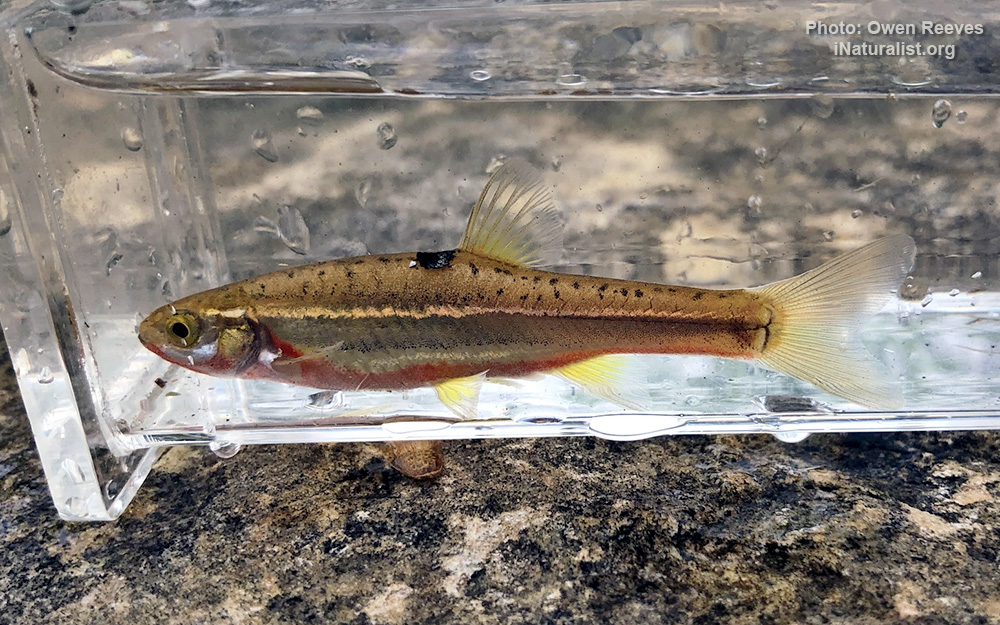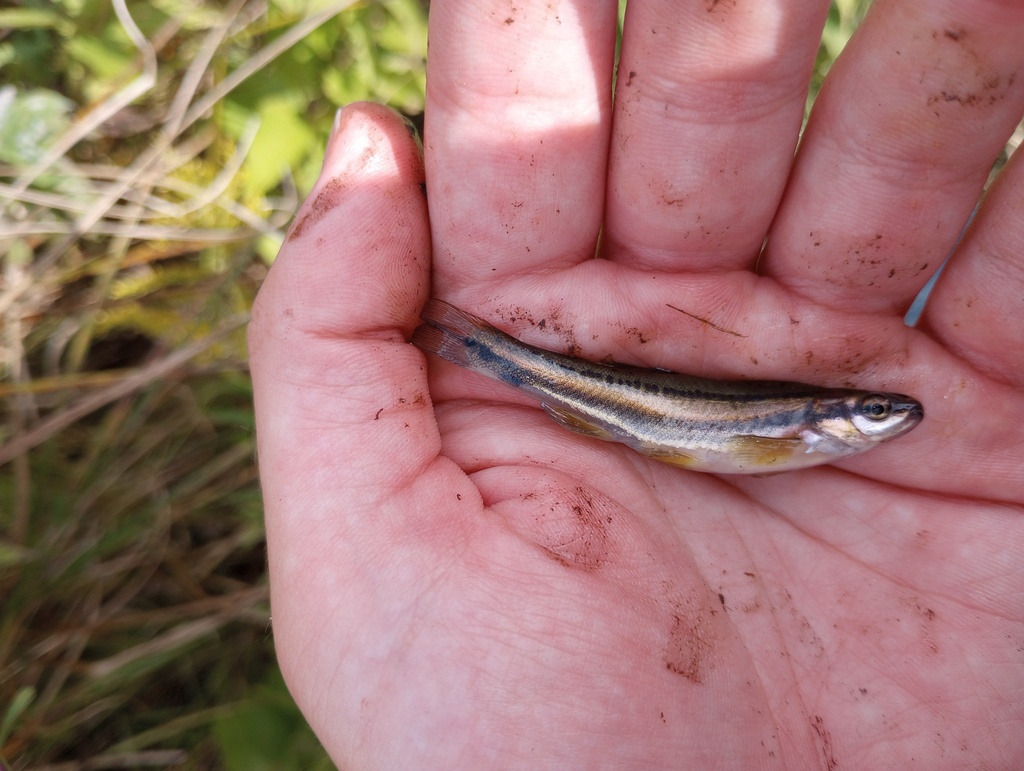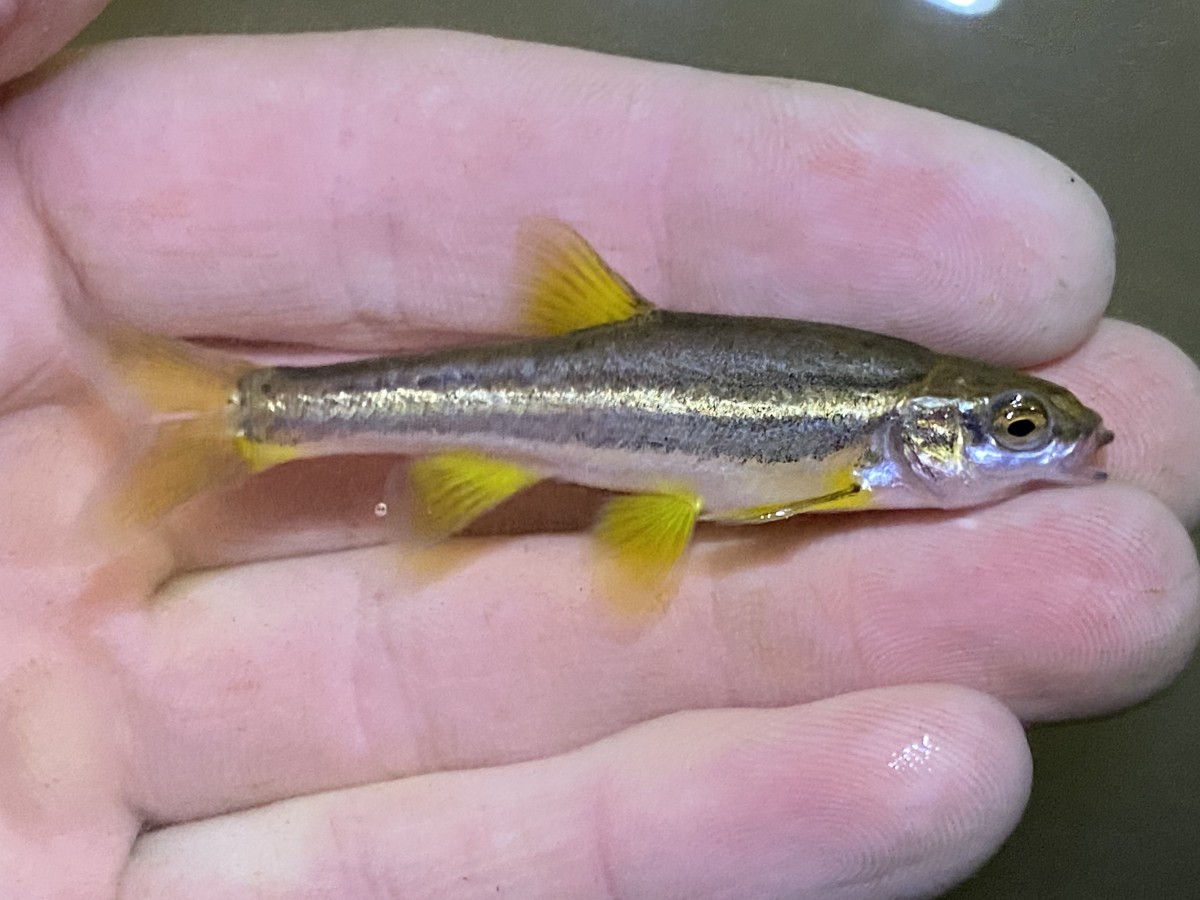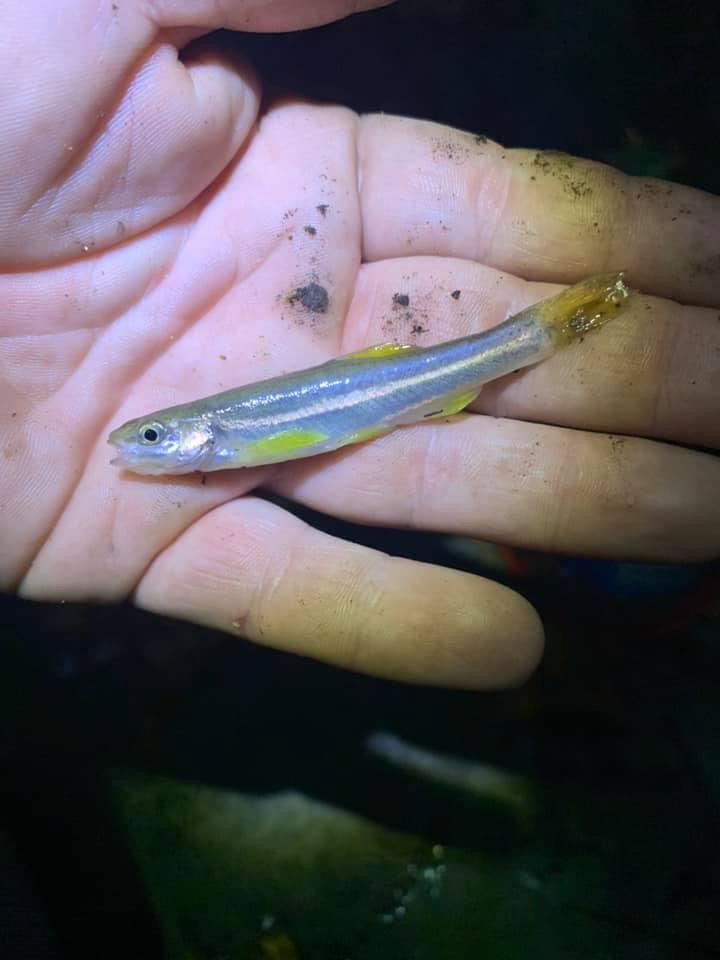Southern redbelly dace
(Chrosomus erythrogaster)

Classification
General data
The southern redbelly dace (Chrosomus erythrogaster), is a North American species of temperate freshwater fish. The natural geographic range extends from Western New York to Minnesota, and south to Oklahoma, Arkansas, and Alabama. This fish prefers flowing pools of creeks and streams.
The extremely similar northern redbelly dace can be distinguished by a rounder, blunter head and a more upturned mouth, as well as by differences in spawning behavior. Also, male southern redbelly dace show a characteristic red belly in spring while their northern counterparts keep a white belly.
Maximum length is reported as 9 cm TL, but average length is typically 6 cm TL.
The fish live a few years, the maximum reported at 3.
These dace have horizontal black stripes and a silvery area above the black stripe. Males have red or yellow stripes below the main black stripe that are especially evident during breeding season. The southern redbelly dace has two sets of paired fins located distal to the operculum, the pectoral and ventral fins. These are followed distally by the anal fin and caudal fin. All fins are yellow, with the dorsal and caudal fins having a red base at their proximal connection. The caudal fin has a notched shape with two points. The rays in the fins are soft and are called soft rays. Their fusiform body shape is efficient for swimming through moving waters.
Distribution
North America: Basins of Lakes Erie and Michigan and Mississippi River from New York to Minnesota, south to Tennessee River drainage in Albama, and White and Arkansas River drainages in Arizona and Oklahoma, USA. Isolated populations on Former Mississippi Embayment in Tennessee, Mississippi and Arkansas; Kansas River system in Kansas; and upper Arkansas River drainage in Colorado and New Mexico, USA.














